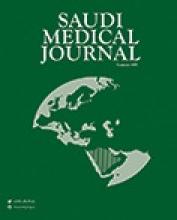Abstract
OBJECTIVE: To find out the diagnostic value of seminal a-glucosidase enzyme index in the ejaculated semen samples of proven-fertility and primary infertility patients, for the sperm motility and fertilizing capacity.
METHODS: The study which lasted approximately 2 years was carried out in the Andrology Department of the Arab Fertility Center, Jeddah, Kingdom of Saudi Arabia. Eighty-five healthy male patients (age 25-38 years) were admitted into the study. They were divided into 2 main groups as proven-fertility group and primary infertility group. Each group was again subdivided into 4 classes based on the sperm concentrations. The sperm motility assessment was carried out quantitatively by Semi automated Computer assisted Semen analysis using Autosperm analyzer. Simultaneously, a-glucosidase enzyme index was determined in all the semen samples.
RESULTS: The results were tabulated as per the standard sperm motility grades of the World Health Organisation, under the classified sperm concentrations of the study. The progressive motility grades were compared with the enzyme index of a-glucosidase in both the groups. The total progressive motility was found higher in the high-density (classes I and II) than the low-density (classes III and IV) semen samples. The enzyme index readings of the various classes of sperm concentrations were significant (p<0.05) and showed a stepwise fall from 89% ±9% to 52%±3% in the proven fertility group. Although, a similar trend has been observed (48%±5% to 20%±2%) in the primary infertility group, the enzyme index class II sperm concentration (44%±6%) was not found significant with class 1 (48%±5%) sperm concentration, but the significance was achieved with the other 2 classes. The readings of enzyme index between the groups were found highly significant (p, 0.001).
CONCLUSION: The enzyme index of a-glucosidase estimations in semen samples may indicate a positive correlation with progressive motility and fertilizing capacity of spermatozoa and may serve as diagnostic value in individuals showing normal levels of sperm concentration and serum androgen.
- Copyright: © Saudi Medical Journal
This is an open-access article distributed under the terms of the Creative Commons Attribution-Noncommercial-Share Alike 3.0 Unported, which permits unrestricted use, distribution, and reproduction in any medium, provided the original work is properly cited.






